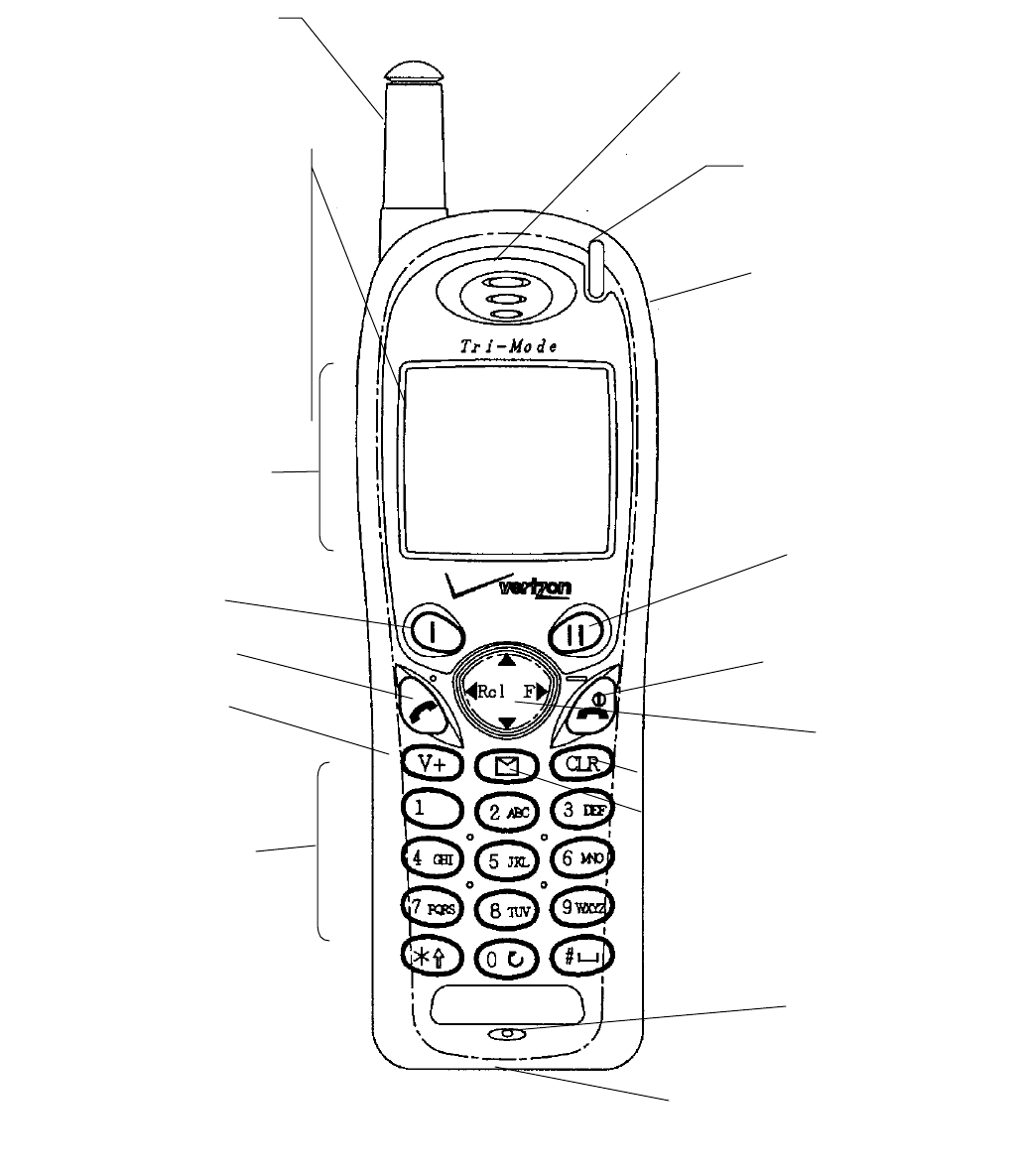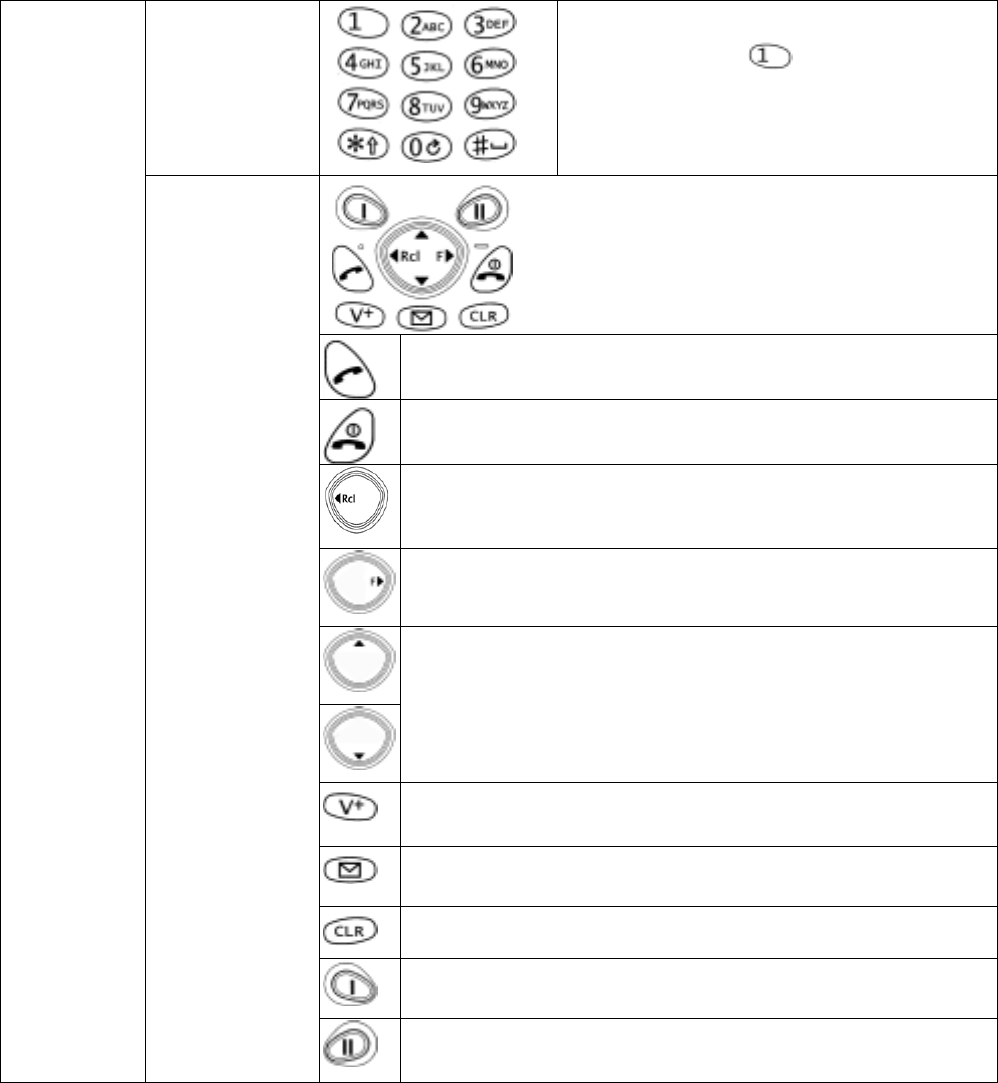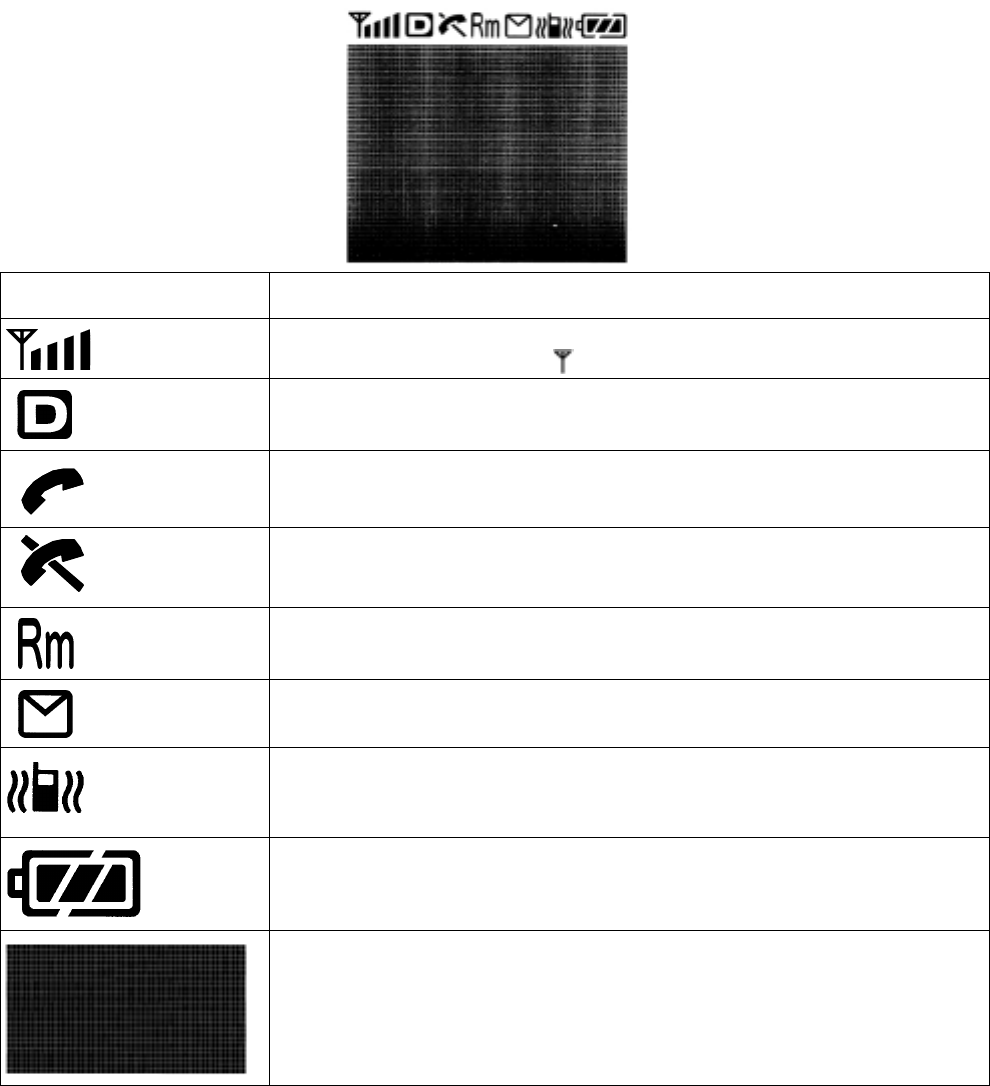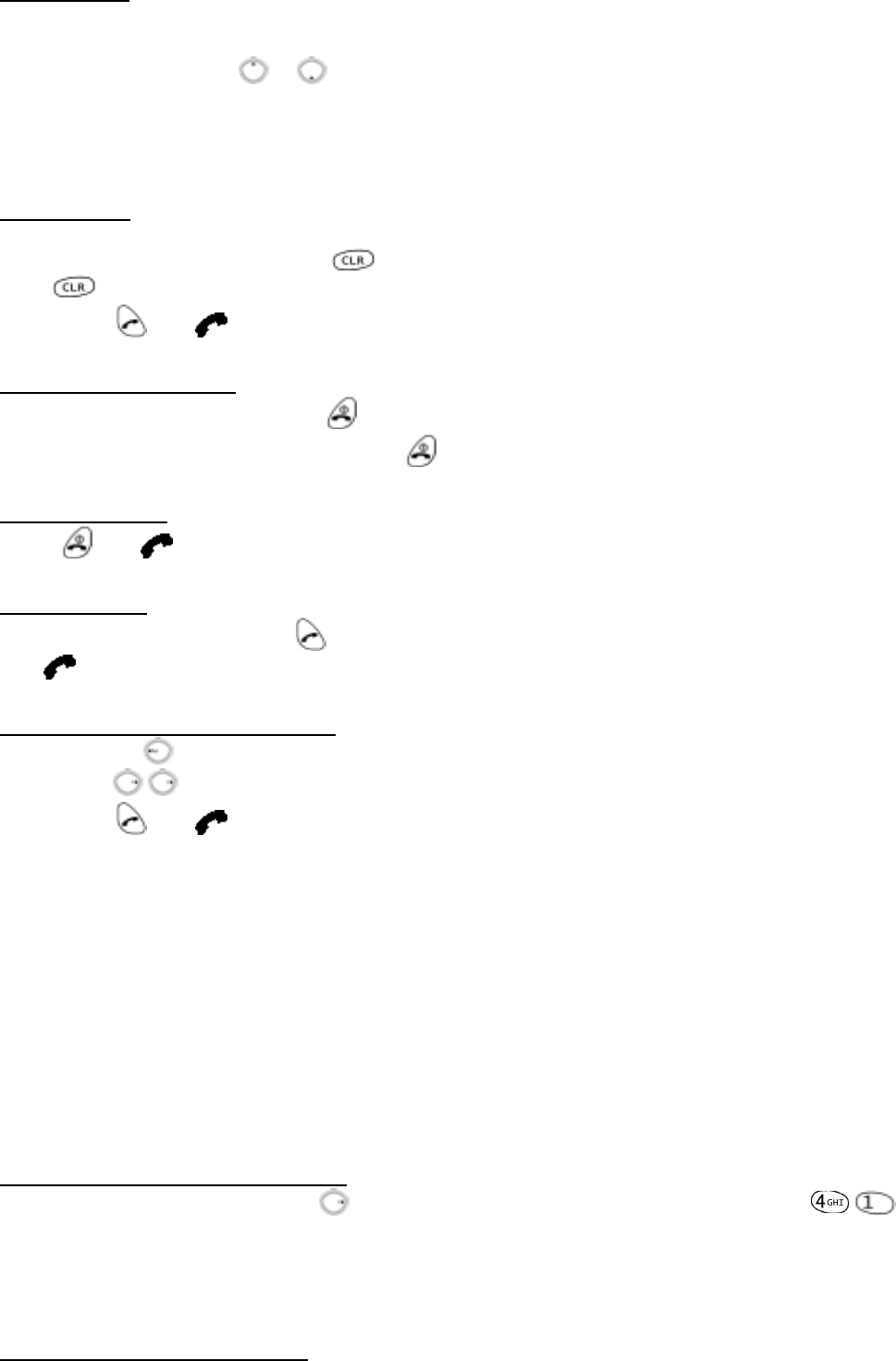Dynabook DCE44327A Tri-Mode Dual Band Analog/PCS Phone User Manual Users Operating Manual
Toshiba Corporation Tri-Mode Dual Band Analog/PCS Phone Users Operating Manual
Dynabook >
Contents
- 1. Users Operating Manual
- 2. Amendment RF Warning Statement
Users Operating Manual

APPLICANT: TOSHIBA CORPORATION TRANSCEIVER TYPE: CJ6DCE44327A
PAGE 1 OF EXHIBIT Type
“
User Manual
”
OPERATING INSTRUCTIONS
TABLE OF CONTENTS
PAGE
1. FUNCTIONS
1-1 External View of the Unit 2
1-2 Function of Keys and Controls 3
1-3 LCD Readout Indication Items 4
2. OPERATION
2-1 Basic Operation 5
2-2 Placing Telephone Calls 6
2-3 End to End Signaling 6
2-4 Call Time Display 6
3. INPORTANT SAFETY INFORMATION 7
4. WARNING 7
5. FCC RF EXPOSURE INFORMATION 8

APPLICANT: TOSHIBA CORPORATION TRANSCEIVER TYPE: CJ6DCE44327A
PAGE 2 OF EXHIBIT Type
“
User Manual
”
1.FUNCTIONS
1-1 EXTERNAL VIEW OF THE UNIT
Retractable
Whip Antenna
Incoming
Call Indicator
End Key with
Power On/Off
Multi Function
Key
• Up-arrow
• Recall
• Function
• Down-arrow
Microphone
Soft Key1
Message Key
• Power Indicator
• Receiving Signal Strength
Indicator
• Digital Mode Indicator
• IN USE Indicator
• Roaming Indicator
• Message Indicator
• Alarm Indicator
• Batter
y
Level Indicator
Digit Keys
64x129 Dot Display
Data Connector
DC Socket
Send Ke
y
Earpiece
Earphone
Mic Jack
CLR Key
Voice Mail
Dial Key
Soft Key2

APPLICANT: TOSHIBA CORPORATION TRANSCEIVER TYPE: CJ6DCE44327A
PAGE 3 OF EXHIBIT Type
“
User Manual
”
2-2 FUNCTION OF KEYS AND CONTROLS
Digit Keys To enter a Telephone Numbers, Names or
special characters. is also used for One
Touch Emergency feature.
To originate or receive a Call.
To terminate a Call and to turn the Unit ON/OFF.
To recall phone numbers from memory.
To be used with other Keys to activate several special
Features.
To control Earpiece audio level, Alert Tone and key Tone.
Also used as Up/Down-arrow keys
To dial most frequently called Number from specially assigned
Memory Address only by One Key stroke.
To readout Text Massage or Voice Mail Notification from
memory.
To clear the Digit from memory and Display.
Soft key 1
Key-Board
Arrangement
Function Keys
Soft key 2

APPLICANT: TOSHIBA CORPORATION TRANSCEIVER TYPE: CJ6DCE44327A
PAGE 4 OF EXHIBIT Type
“
User Manual
”
2-3 LCD READOUT INDICATION ITEMS
Item Description
Receiving Signal Strength Indicator. The number of lines indicates the
received Signal Strength, and is also used as a POWER ON Indicator.
Digital Mode Indicator. To indicate the phone is operating in digital mode.
A Call is in process.
No Service Indicator. The phone cannot receive signals.
The phone is out of the Home-Area.
Message indicator. To indicate that Text Message are stored in memory or
Voice Messages are in your Voice Mailbox.
Vibrator Alert Indicator
Battery Level Indicator. Monitor the current battery voltage level.
Graphic full-dot matrix display with flexible font size in 2 to 6 line.

APPLICANT: TOSHIBA CORPORATION TRANSCEIVER TYPE: CJ6DCE44327A
PAGE 5 OF EXHIBIT Type
“
User Manual
”
3. OPERATION
3-1 BASIC OPERATION
Turning the Unit On
Press the switch. The indicator will light (all indicators will light momentarily and then shows your
Telephone Number, and a Tone will be heard).
Note: To turn the Unit OFF, press again for about one second.
* Signal Strength Indicator
This enables you to know the Signal Strength in your Area.
The number of the shaded blocks indicates it, and four blocks is the maximum level. The display will vary
as your car moves. If the signal is not strong enough to originate a call, “No Service” will appear on the
Dot display and also “No Service Indicator” will lit on.
To Store a Number in Memory
1. Press then enter a Telephone Number.
2. Press ,, then enter the Memory Address
(01 through 99).
To Recall a Number from Memory
Press , the display shows “Address” then enter the Memory Address (01 through 99).
Phone Book Scroll
This feature will be useful in finding a certain Telephone Number by scrolling the Repertory Memory
Addresses
1. Press , enter the memory address (01 through 99)
2. Press or
: Previous Address
: Next Address
Automatic Number Entry
This feature allows an automatic Number Entry into the vacant Repertory Memory Address.
1. Enter a Telephone Number.
2. Press ,,,.
If there is no vacant Address in the assigned Area, Telephone Number will remain not entered in the
Memory.
To Lock the Unit
Press ,,.
The Unit will remain locked until unlocked, even if the power is turned off.
To Unlock the Unit
Enter the 4 digit unlock Code. The “LOCK” will go out when the Unit is unlocked.

APPLICANT: TOSHIBA CORPORATION TRANSCEIVER TYPE: CJ6DCE44327A
PAGE 6 OF EXHIBIT Type
“
User Manual
”
Volume Control
An Audio Level of the Alert Tone, Earpiese and the Key Tone can be adjusted by the Volume Control
Buttons.
Earpiece: Keep pressing or Button until the moderate Sound Level is got.
Alert Tone Level will be displayed on the Readout digitally during the level adjustment and the Sample
Tone will help you to know the Sound Level when not engaged in a Telephone Conversation.
3-2 PLACING TELEPHONE CALLS
To Place a Call
1. Enter a Telephone Number. Maximumits of the dialed number are displayed on the digital Readout.
2. If a dialing error is made, press then enter the telephone number again. By pressing
momentarily (less than approx. 0.5 sec.), only last digit can be cleared. (Last Digit clear)
3. Press . The indicator will light.
If a Call Fails to go Through
If you hear the Reorder signal, press and try again.
Redial: If the Intercept signal is heard, press and dial the Correct Number.
To Terminate a Call
Press . The indicator will go out.
To Receive Calls
When the Telephone rings, press to answer.
The indicator will light.
To Place a Call to a Number in Memory
Pressing , then enter the Memory Address (01 through 99). If you want to see all number,
press ,
1. Press . The indicator will light, and the Call will be placed.
3-3 END TO END SIGNALLING
This feature permits you to utilize some attractive ways of phone, such as Accessing Discounted Long
Distance Network, Signal Pager, or Banking by Phone etc.
For these purposes, the signaling should be in DTMF. ( Touch Tone TM )
3-4 CALL TIME DISPLAY
This Feature automatically counts the Time while the Conversation is being made through your Phone.
Both the Talk Time of the Last Call and Cumulative Talk Time, can be shown on the Readout.
The Memory for Timer can also be cleared if necessary, and you can notice the Talk Time roughly by
Tones on the Phone.
To Display the Talk Time of the Last Call
1. Press , then , .
The Talk Time of the Last Call will be displayed on the Readout.
The display format is as follows.
31M 25S ... 31 min and 25 sec
To Display the cumulative Talk Time

APPLICANT: TOSHIBA CORPORATION TRANSCEIVER TYPE: CJ6DCE44327A
PAGE 7 OF EXHIBIT Type
“
User Manual
”
Press , then , , ,
The Cumulative Talk Time will be displayed as follows.
1H 23M 45S ... 1hour 23min. and 45sec.
4. IMPORTANT SAFETY INFORMATION
Please read and follow these Cautions carefully:
TURN OFF your Unit in an explosive atmosphere (near a fuel pump, blasting area, etc.).
DO NOT dial when your vehicle is moving in those states where this action is illegal (this is not a
prudent practice, even where it is legal).
DO NOT permit untrained personnel to operate the Unit.
5. WARNING
The following offenses can be punished by fine, imprisonment, or both:
• Using obscene, indecent, or profane language.
• Using the unit to give off false distress calls.
• Wiretapping or otherwise intercepting a Telephone Call, unless that person has first obtained the
consent of the parties participating in the Call.
• Making anonymous Calls to annoy, harass, or molest other people.
• Charging to an account without authorization to avoid payment for service.
• Refusing to yield a party line when informed that it is needed for an emergency Call. (It is also
unlawful to take over a party line by stating falsely that it is needed for an emergency).

APPLICANT: TOSHIBA CORPORATION TRANSCEIVER TYPE: CJ6DCE44327A
PAGE 8 OF EXHIBIT Type
“
User Manual
”
5. FCC RF EXPOSURE INFORMATION
Consumer Information on SAR:
THIS MODEL PHONE MEETS THE GOVERNMENT’S REQUIREMENTS FOR EXPOSURE TO RADIO
WAVES.
Your wireless phone is a radio transmitter and receiver. It is designed and
manufactured not to exceed the emission limits for exposure to radiofrequency (RF)
energy set by the Federal Communications Commission of the U.S. Government. These
limits are part of comprehensive guidelines and establish permitted levels of RF energy
for the general population. The guidelines are based on standards that were developed
by independent scientific organizations through periodic and thorough evaluation of
scientific studies. The standards include a substantial safety margin designed to assure
the safety of all persons, regardless of age and health.
The exposure standard for wireless mobile phones employs a unit of measurement known
as the Specific Absorption Rate, or SAR. The SAR limit set by the FCC is 1.6W/kg.* Tests
for SAR are conducted using standard operating positions specified by the FCC with the
phone transmitting at its highest certified power level in all tested frequency bands.
Although the SAR is determined at the highest certified power level, the actual SAR level
of the phone while operating can be well below the maximum value. This is because the
phone is designed to operate at multiple power levels so as to use only the power
required to reach the network. In general, the closer you are to a wireless base station
antenna, the lower the power output.
Before a phone model is available for sale to the public, it must be tested and certified to
the FCC that it does not exceed the limit established by the government-adopted
requirement for safe exposure. The tests are performed in positions and locations (e.g.,
at the ear and worn on the body) as required by the FCC for each model. The highest
SAR value for this model phone when tested for use at the ear is 1.42W/kg and when
worn on the body, as described in this user guide, is 1.04W/kg. (Body-worn
measurements differ among phone models, depending upon available accessories and
FCC requirements).
While there may be differences between the SAR levels of various phones and at various
positions, they all meet the government requirement for safe exposure.
The FCC has granted an Equipment Authorization for this model phone with all reported
SAR levels evaluated as in compliance with the FCC RF emission guidelines. SAR
information on this model phone is on file with the FCC and can be found under the
Display Grant section of http://www.fcc.gov/oet/fccid after searching on FCC ID
CJ6DCE44327A.
Additional information on Specific Absorption Rates (SAR) can be found on the Cellular
Telecommunications Industry Association (CTIA) web-site at http://www.wow-com.com.
___________________________________
* In the United States and Canada, the SAR limit for mobile phones used by the public is
1.6 watts/kg (W/kg) averaged over one gram of tissue. The standard incorporates a
substantial margin of safety to give additional protection for the public and to account for
any variations in measurements.

APPLICANT: TOSHIBA CORPORATION TRANSCEIVER TYPE: CJ6DCE44327A
PAGE 9 OF EXHIBIT Type
“
User Manual
”
SAFETY INFORMATION:
FCC RF EXPOSURE INFORMATION
In August 1996 the Federal Communication Commission (FCC) of the United States with is action in repot
and order FCC 96-326 adopted an updated safety standard for human exposure to radio frequency (RF)
electromagnetic energy emitted by FCC regulated transmitter. Those guidelines are consistent with the
safety standards bodies. The design of this phone complies with the FCC guidelines and these
international standers.
Use only the supplied or an approved antenna. Unauthorized antenna, damaged antennas, modifications,
or attachments could impair call quality, damage the phone, or result in violation of FCC regulations.
Please contact your local dealer for replacement antenna.
BODY-WORN Operation
This device was tested for typical body-worn operations with the BC-9100 belt-clip and LB-9100 holster
models, offered by Audiovox as accessories to this phone, and found to comply with FCC RF exposure
requirements. Third-party belt-clips, holsters and similar accessories should be avoided, as they have not
been tested and may not comply with FCC RF exposure limits.
For more information about RF exposure, plaese visit the FCC website at www.fcc.gov